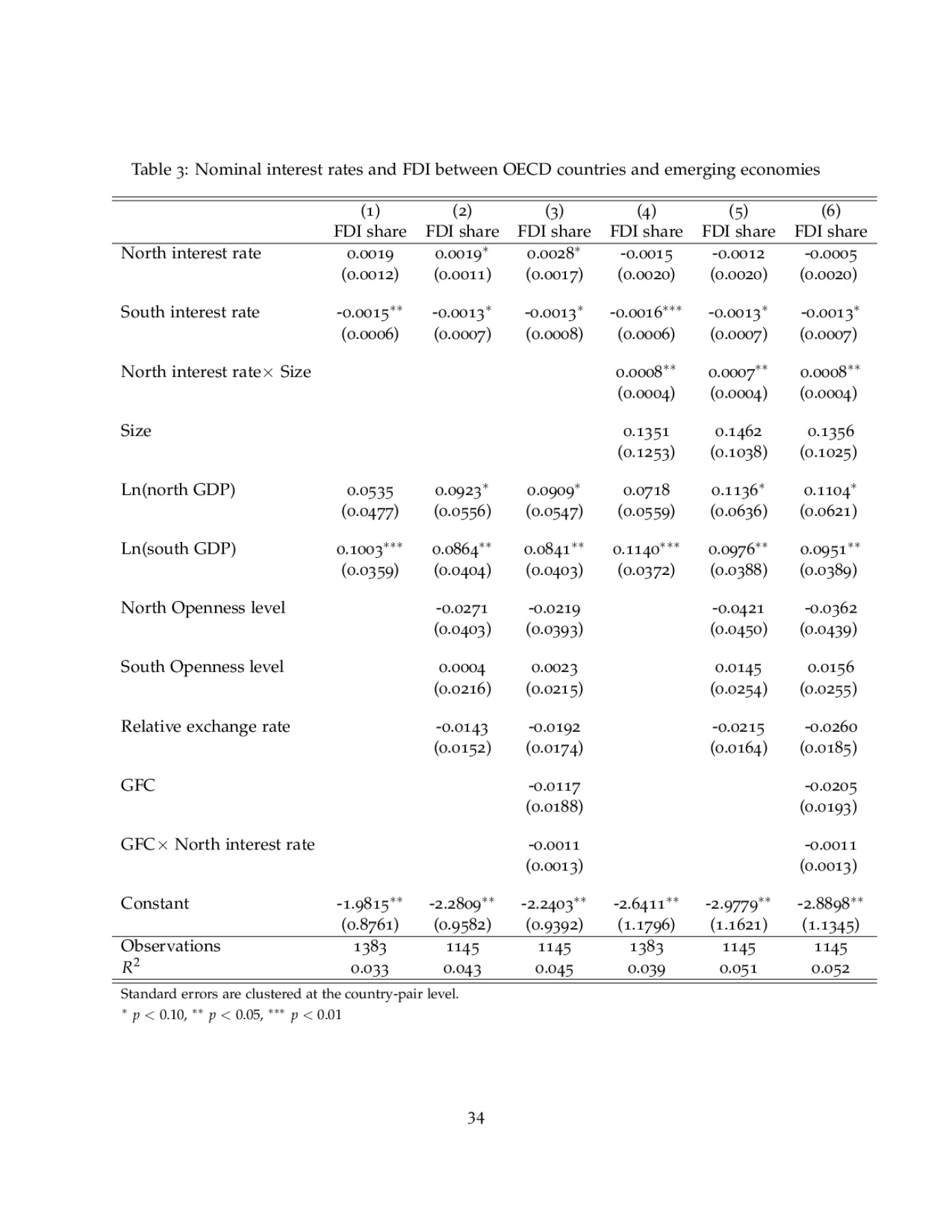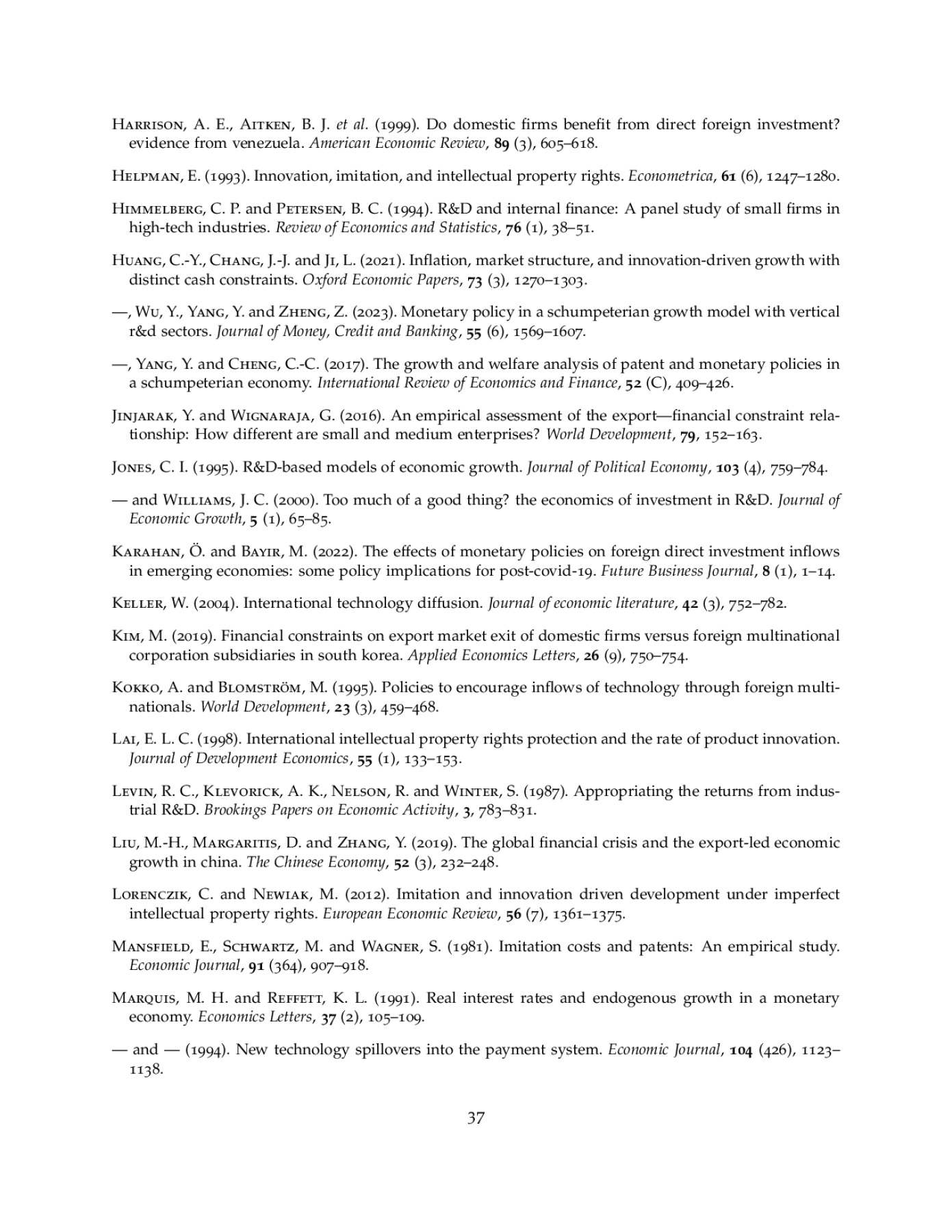2024 AMES in E/SE Asia, Ho Chi Minh City, Vietnam: August, 2024
Inflation, Innovation, and Technology Transfer in an Open Economy with Variety Expansion
Hung-Ju Chen, Hao Guo, Chien-Yu Huang, Yibai Yang
This study explores the cross-country effects of inflation on innovation and technology
transfer in a North-South variety-expansion model with innovative northern R&D and adaptive
southern R&D, in which R&D is subject to cash-in-advance constraints. In this model,
higher southern inflation leads to a permanent increase in the North-South relative wage
ratio, a temporary decrease in the northern innovation rate, and a permanent decrease in
technology transfer. In contrast, higher northern inflation leads to a permanent decrease in
the North-South relative wage ratio, a temporary decrease in the northern innovation rate,
and a permanent decrease (increase) in technology transfer if the southern population is sufficiently
small (large). Finally, a quantitative analysis is performed by calibrating the model
to the China-US data, and the numerical results are consistent with these policy implications.
Moreover, using country-pair panel data across OECD and emerging countries from 2003
to 2013, our model receives preliminary support in the predictions of nominal interest rate
(inflation) effects on technology transfer from the North to the South.
transfer in a North-South variety-expansion model with innovative northern R&D and adaptive
southern R&D, in which R&D is subject to cash-in-advance constraints. In this model,
higher southern inflation leads to a permanent increase in the North-South relative wage
ratio, a temporary decrease in the northern innovation rate, and a permanent decrease in
technology transfer. In contrast, higher northern inflation leads to a permanent decrease in
the North-South relative wage ratio, a temporary decrease in the northern innovation rate,
and a permanent decrease (increase) in technology transfer if the southern population is sufficiently
small (large). Finally, a quantitative analysis is performed by calibrating the model
to the China-US data, and the numerical results are consistent with these policy implications.
Moreover, using country-pair panel data across OECD and emerging countries from 2003
to 2013, our model receives preliminary support in the predictions of nominal interest rate
(inflation) effects on technology transfer from the North to the South.
Preview
















































